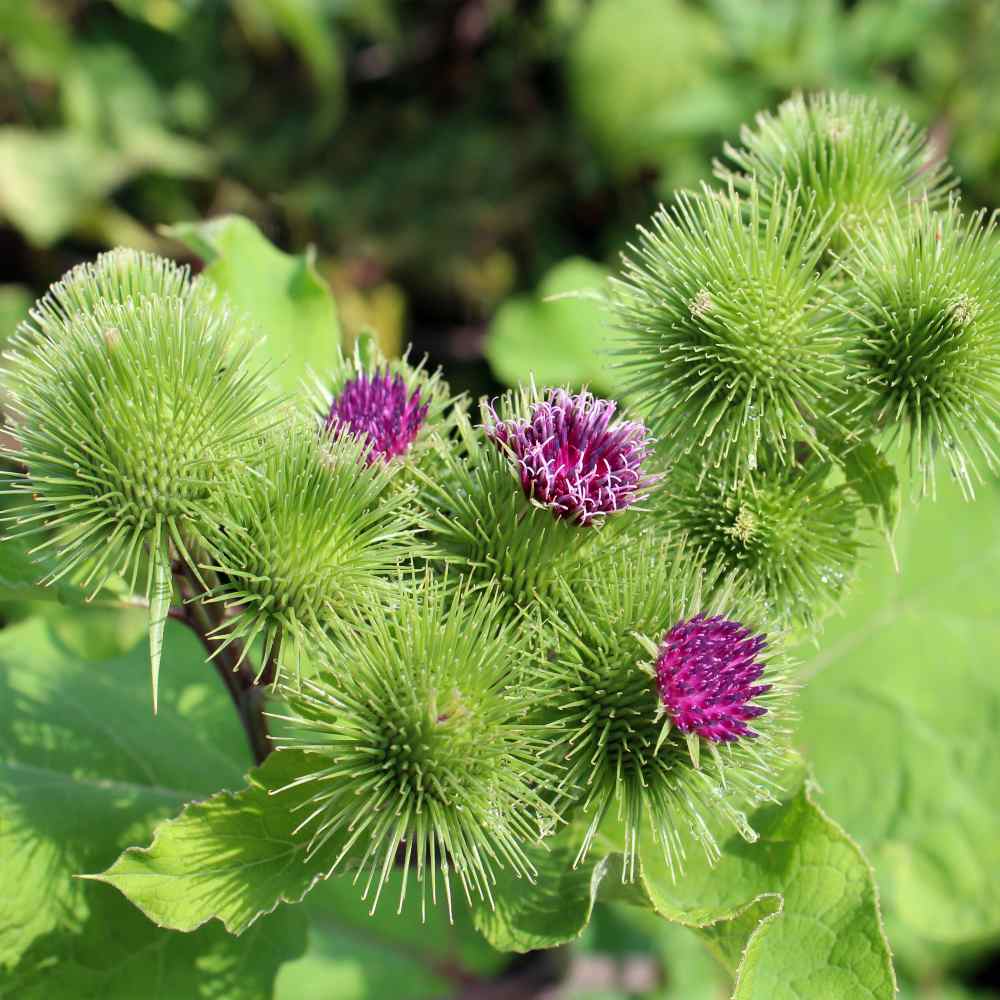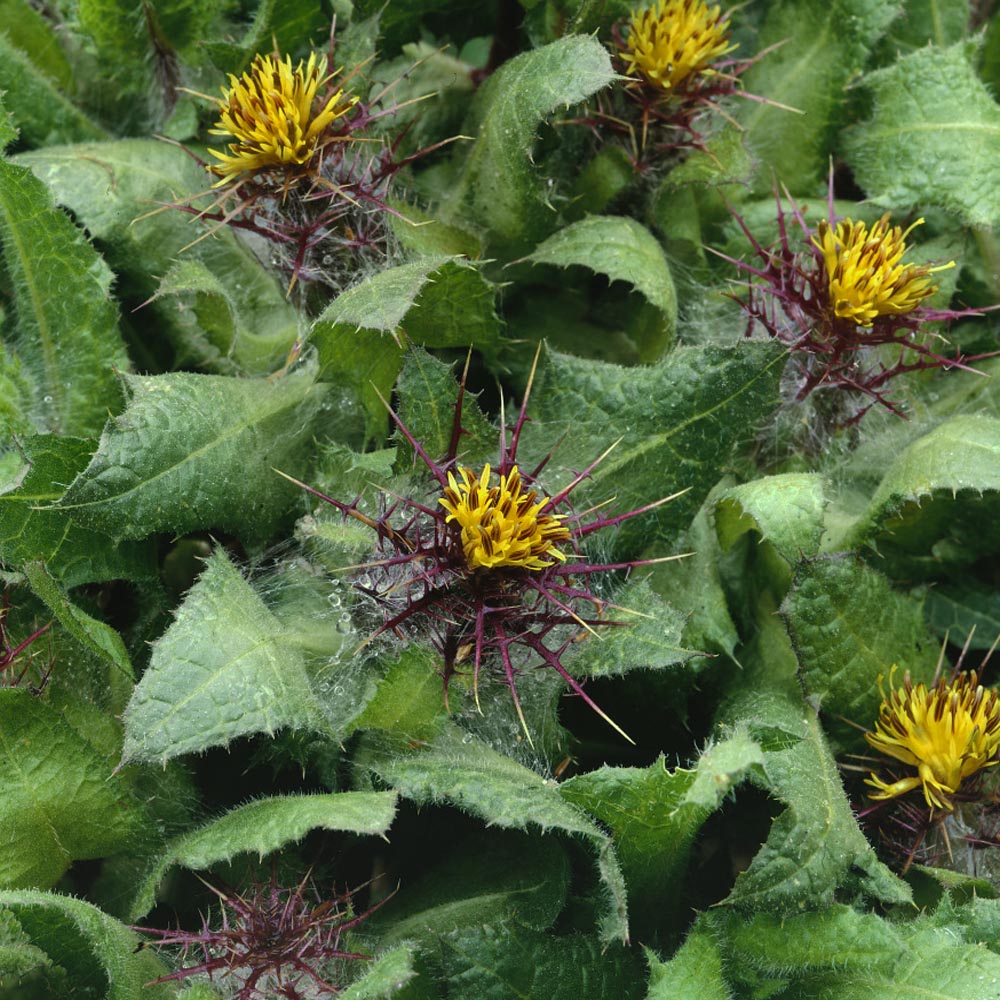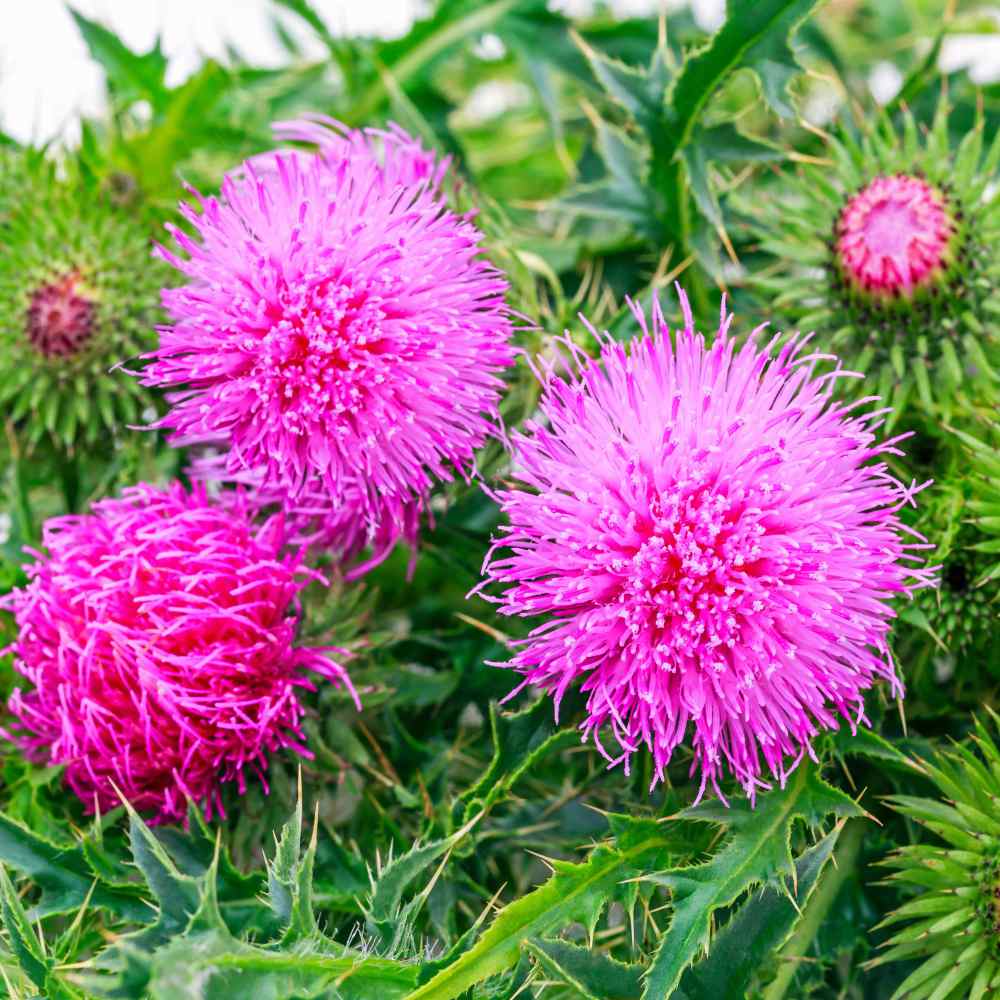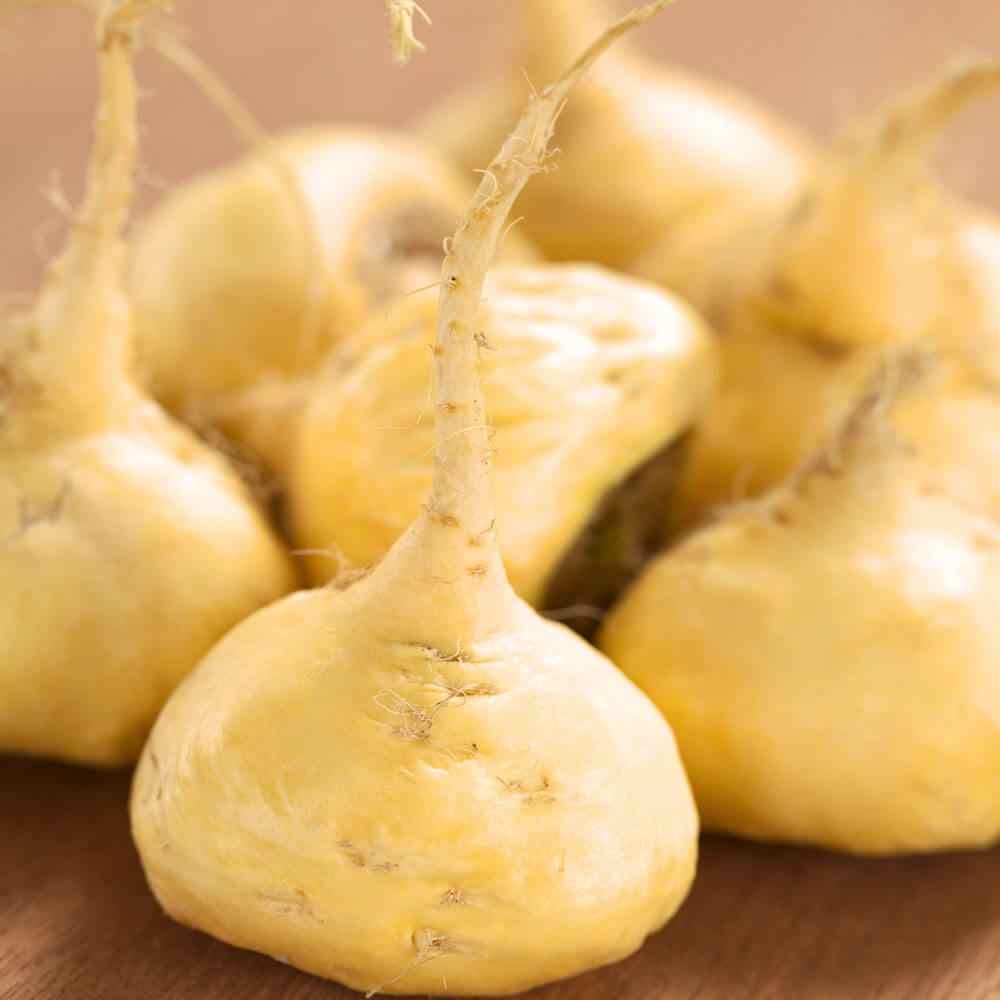
Burdock Planting Guide
Quick Facts About Burdock
Burdock is a biennial flowering herb that grows in USDA zones 2 through 10. This is a particularly robust plant that puts forth clusters of leaves in its first year, and then produces flowers the second year. If you have seen gobo root in the grocery store, this is another name for burdock. Gobo comes from Japanese cuisine where both the burdock leaves, roots, and stems are used extensively.
Planting Time
Start Burdock seeds directly outdoors as soon in the spring as the soil can be prepared.

Planting Location
Burdock plants grow along roadsides, in open fields, at the edges of woods, and anywhere ground has been disturbed just as most thistles would. Grows in full sun to partial shade.
How to Plant Burdock
- Start Burdock seeds directly outdoors as soon in the spring as the soil can be prepared.
- Cover the Great Burdock seeds with light soil and lightly tamp down.
- Seed germinates in 7 - 14 days.
- Sow 2 - 3 seeds per plant. Plant burdock 6-8 inches between plants and 24-36 inches between rows.
- Keep soil moist until germination.

Care And Maintenance
- You can give your growing burdock a boost with an all-purpose fertilizer if you’d like, but it isn’t necessary.
- Provided that the soil is loamy and adequately fertilized, the key consideration with burdock is consistent watering. To develop robust, sizable roots, it requires a significant amount of water, so ensure it stays well-hydrated. Be cautious not to overwater as this may lead to root rot if the plant is left in waterlogged conditions.
- To avoid burdock self seading, snip off the flowers before they dry.
- Burdock, a biennial plant, completes its life cycle over two years before dying off. The roots are typically harvest-ready 90-120 days after planting, while the leaves can be picked at your convenience. Harvest the roots either in the first autumn or the second spring year. Due to their deep growth, a deep, loamy soil is beneficial for cultivation. You can either dig straight down to pull up the roots or dig a trench alongside the root to pull it sideways. Use young leaves like spinach. The roots can be boiled, roasted, or fried and is used in many recipes.




































